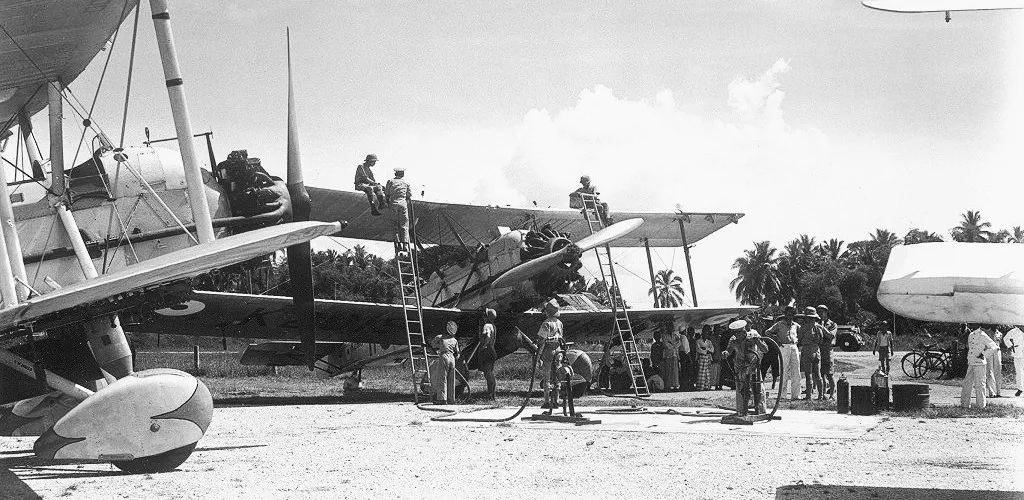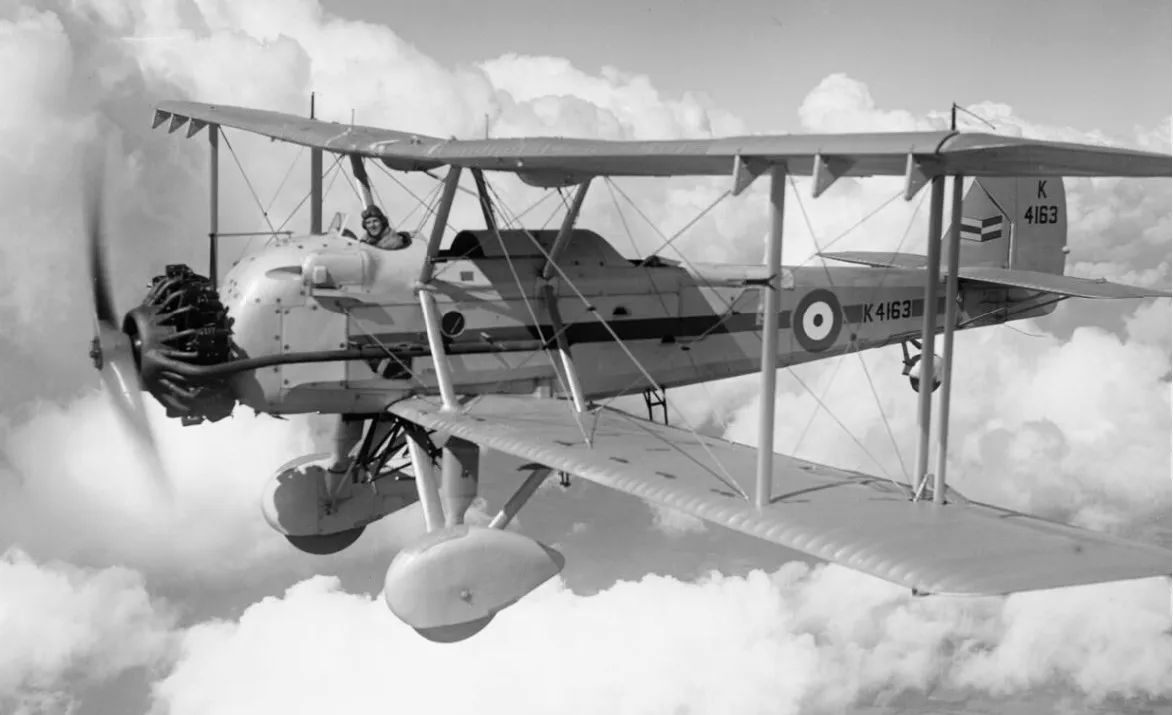Canadian Warplanes 1: Vickers Vildebeest
Vickers Vildebeest

(RAF Photo)
Vickers-Vincen, (Serial No. K4712), coded HV-L, No. 8 Squadron RAF.

(RAF Photo)
The Vickers Vildebeest was a very large two- to three-seat single-engined British biplane designed and built by Vickers and used as light bombers, torpedo bombers and in army cooperation roles. First flown in 1928, the Vildebeest remained in service at the start of the Second World War, with the last Vildebeests flying against Japanese forces over Singapore and Java in 1942.
Designed against Air Ministry Specification 24/25 for the Royal Air Force (RAF), for a land-based torpedo bomber to replace the Hawker Horsley, the prototype Vildebeest, an all-metal fuselage aircraft with single-bay unstaggered fabric-covered wings and tail, was first flown in April 1928 as the Vickers Type 132, powered by a Bristol Jupiter VIII radial engine.
After initial evaluation, the Vildebeest was shortlisted for comparison with the Blackburn Beagle and Handley Page Hare. As the Jupiter VIII was prone to vibration, a second prototype, the Vickers Type 204 was fitted with an Armstrong Siddeley Panther IIA engine and after further testing, the Vickers design was confirmed as the winner of the contest but engine problems persisted until the type was tested with a new version of the Jupiter, which later became known as the Bristol Pegasus. An initial production order was placed in 1931 for nine aircraft, with the first production aircraft flying in September 1932.
Further production ensued, with an improved version fitted with a 635 hp (474 kW) Pegasus IIM3 entering service but after only 30 examples had been produced the Air Ministry requested a modification (Specification 15/34) which added a third crew position, thus creating the Vildebeest Mk III, of which 150 examples being built for the RAF. The Mk. IV introduced the much more powerful 825 hp (615 kW) Bristol Perseus sleeve valve radial engine enclosed in a NACA cowling which significantly improved performance, increasing maximum speed to 156 mph (251 km/h) and rate of climb to 840 ft/min (4.3 m/s). In this version, the Perseus had overheating problems and was deemed unsuitable for tropical service with production limited to 18 aircraft, all of which served with the home based squadrons. (Wikipedia)
Two RCAF aircrew lost their lives flying the Vickers Vildebeest, RAF (Serial Nos. K4188, and K6394). (CASPIR)
23 Jun 1941. No. 36 Squadron (Rajawali Raja Langit) RAF, RCAF Sgt Ivan Paul Einarson was killed when his Vickers Vildebeest Mk. III (Serial No. K6394) struck high ground in Malysia, while operating in poor visibility. Sgt K.T.W. Mitchell (RAF) and WO R.L.W. Mitchell (RAF) were also killed on this date from this squadron (CWGC).
26 Jan 1942. No, 36 Squadron (Rajawali Raja Langit) RAF, RCAF Flight Sergeant George Ewen was killed in action (KIA), when his Vickers Vildebeest failed to return from operations.

(RAF Photo)
Vickers Vildebeest.

(RAF Photo)
Vickers Vildebeest Mk. IIs of No. 100 Squadron RAF, being refuelled at Kuala Lumpur Airport, Malaya, 1942.

(IWM Photo, HU 59786)
Vickers Vildebeest Mark IIs, K2918 and K2921, of 'A' Flight, No. 100 (TB) Squadron, at RAF Seletar, c1937.

(IWM Photo, HU 59796)
Vickers Vildebeest Mark III torpedo bombers, K6382 and K6375, of No, 100 (TB) Squadron, piloted by Pilot Officer Davis and Flight Sergeant Phillips respectively, approaching Tavoy, Burma.

(IWM Photo, MH 24)
Vickers Vildebeest (Serial No. K4163( torpedo bomber of B Flight, RAF Gosport, UK.

(SDA&SM Photo)
Vickers Vildebeest of RAF at Cranwell Air Base, 22 Feb 1933.

(IWM Photo, H (AM) 361)
A Vickers Vildebeeste Mk III aircraft of No.36 Squadron RAF in flight over Singapore City, Singapore, 22 Sep 1936.

(IWM Photo, ATP 8289B)
Vickers Vildebeest Mk. IV at Martlesham Heath, UK.

(RAF Photo)
Vickers Vildebeeste.





